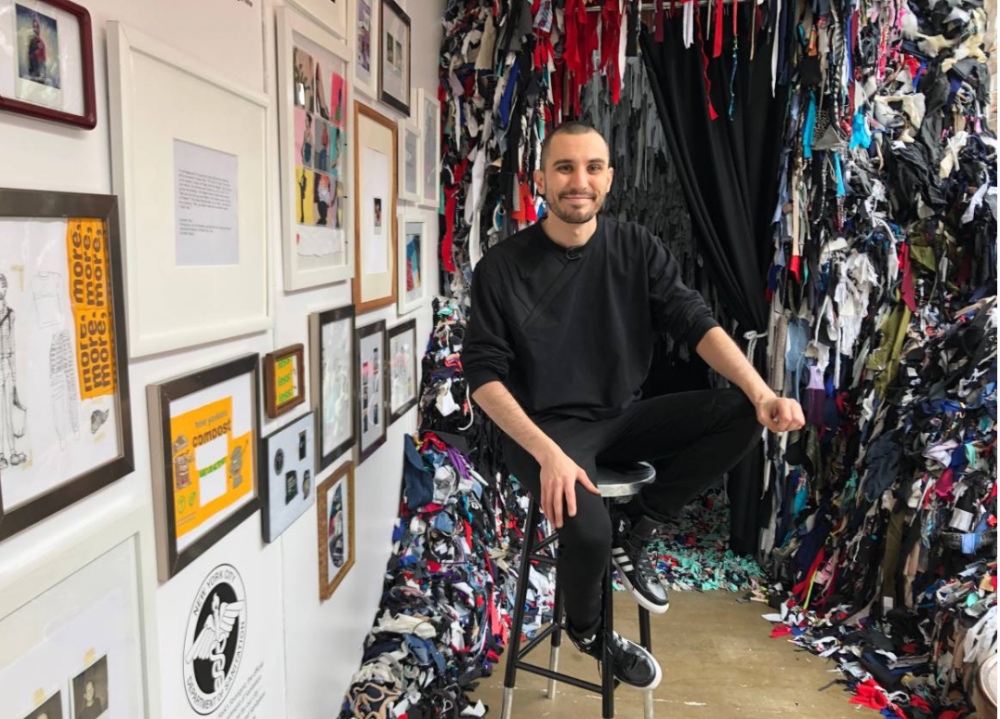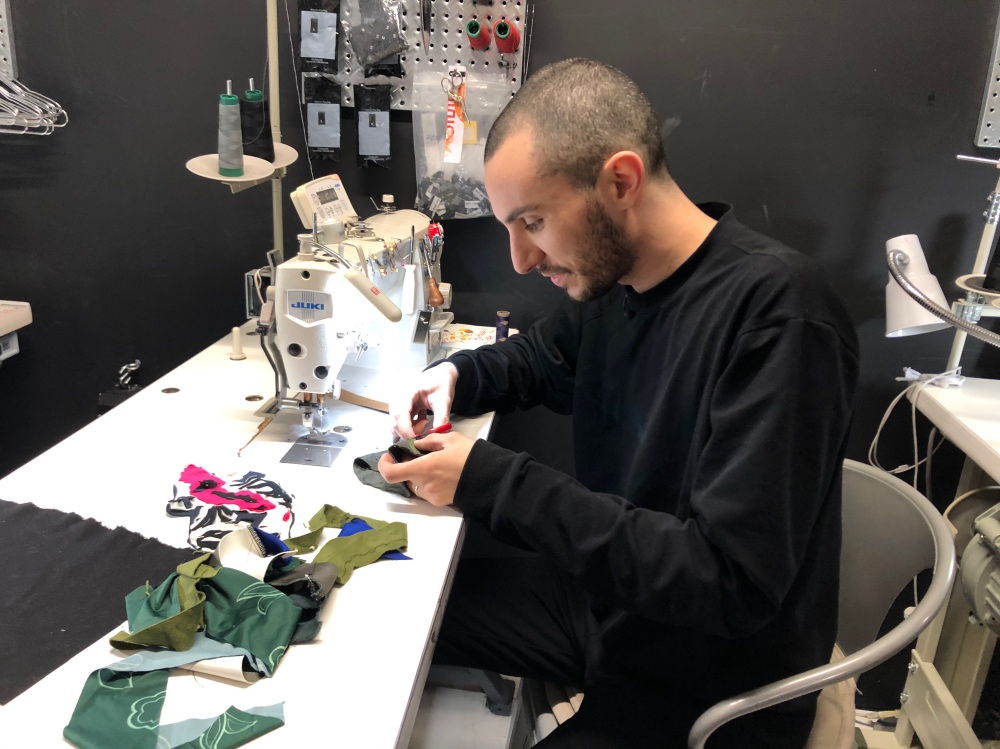
ELLEN WULFHORST, of Thomson Reuters Foundation, reports on how Daniel Silverstein is taking a more sustainable approach to fashion…
New York City, US
Thomson Reuters Foundation
Unlike some designers, Daniel Silverstein doesn’t mind when others freely copy his style. In fact, the designer of fashion from scraps and fabric remnants welcomes imitators.
“The more people that do this, the more we see a solution,” the New York-based designer told the Thomson Reuters Foundation. “My job is to keep innovating and pushing forward and creating new things for people to rip off.”

Zero Waste Daniel designer Daniel Silverstein creates fashion from scraps in his New York city storefront studio, on 27th January. PICTURE: Thomson Reuters Foundation/Ellen Wulfhorst
Silverstein, whose fashion company is Zero Waste Daniel, creates clothing from bits and bolts of leftover cloth, with an eye to using, reusing and recycling all that he can.
From a storefront studio in the city’s Brooklyn borough, he makes unisex jogging pants, teeshirts, sweatshirts, hoodies and jackets, mostly black with colorful patchwork, as well as cloth pouches and patches.
A standout piece is a bright orange coat created from remnants inherited from the New York City Department of Sanitation.
He typically starts with fabric from FabScrap, a local non-profit where designers and other clothes makers deposit a cornucopia of leftover bolts, samples, scraps, zippers, buttons, yarn, tassels and ribbons.
“I see potential everywhere,” Silverstein said. “It’s about looking at things from a different perspective. You only see trash if you choose to.
“I am able to look at these little scraps every day and say, ‘You’re going to leave here as something beautiful and not in a garbage bag,’ and that feels really good.”
Nearly three-fifths of all clothing winds up burned in incinerators or dumped landfills, according to the New Standard Institute, a fashion industry sustainability group.
The US Environmental Protection Agency estimated that in 2017, about 17 million tons of textiles were created in the United States and more than 11 million tons were deposited in landfills. About 2.6 million tons were recycled
Hoping to have an impact, Silverstein is one of several designers paying attention to sustainability in their work.
Women’s clothing designer Eileen Fisher has a program for buying back and reselling used pieces, and online clothing retailer Reformation lists a sustainability measure for each item for sale on its website.
Outdoor clothing retailer Patagonia runs an online store called Worn Wear for buying and selling its used goods, and its competitor Columbia makes high-performance rain wear out of recycled plastic bottles.

Zero Waste Daniel designer Daniel Silverstein creates fashion from scraps in his New York city storefront studio, on 27th January. PICTURE: Thomson Reuters Foundation/Ellen Wulfhorst
Silverstein takes pride in putting sustainability at the heart of what he creates.
“I don’t think of sustainability as a filter or a lens,” he said.
“For me, it’s the mission of zero waste and inspiring a generation of designers to follow suit and make better choices with their design and solve problems with their design.”
Fast-fashion and the planet
More than eight per cent of global greenhouse gas emissions is produced by the apparel and footwear industry, according to the New Standard Institute.
Also, consumers are keeping their clothing purchases about half as long as they did in 2000, according to a 2016 research by McKinsey & Co Management consultants.
Sustainable fashion can mean upcycling fabric into new fashions, like Silverstein does, minimizing water usage, dyes and pesticides or making goods to last and not quickly discarded for the next fast-fashion trend, experts say.
“Upcycling is definitely a more sustainable way to do things because you’re keeping textiles out of landfill or being burned, and you’re not requiring the production of more fabric,” said Alden Wicker, a New York-based sustainable fashion expert and consultant.
“As an option for consumers who are concerned about what their fashion purchases are doing to the planet and people, I think it’s an amazing solution.
“Whether it represents the solution to the issues in the fashion industry, probably not,” she said. “It’s one piece, one small part of the larger puzzle of trying to reform the fashion industry.”
Its drawbacks include limits on how much such a business can grow, she said.
Silverstein, 31, attended New York’s Fashion Institute of Technology and worked for a handful of designers before setting out on his own.
In 2015, he started Zero Waste Daniel to give new life to fabric scraps.
With his husband and business partner Mario DeMarco, Silverstein sells directly to consumers online and from his store and shows his work during New York’s semi-annual Fashion Week.
For now, he does not work with retailers but said he would be open to collaboration to spread his message.
“It’s not just about making money. It’s also about making an impact,” he said. “I don’t have to be part of that system that’s accelerating climate change.”





